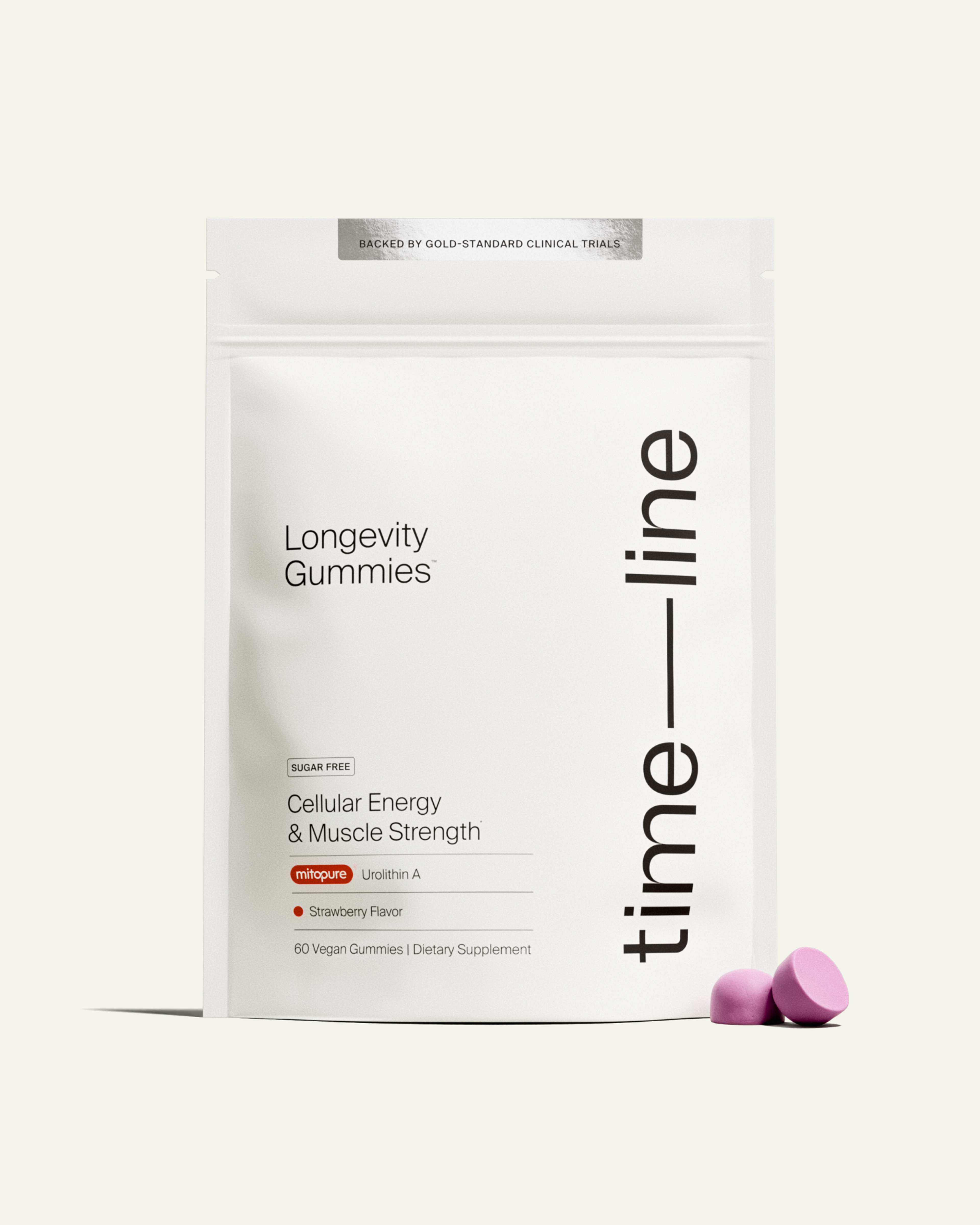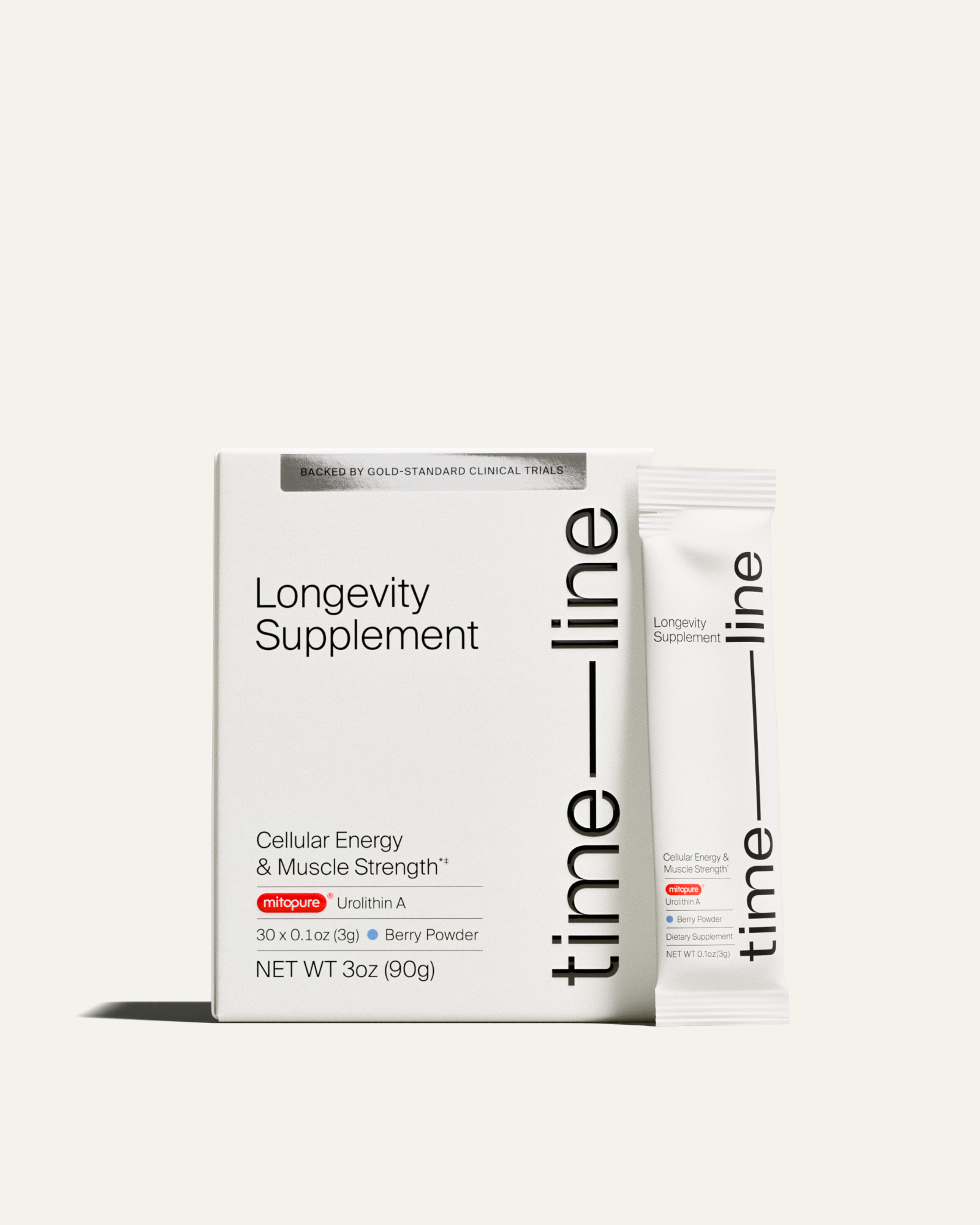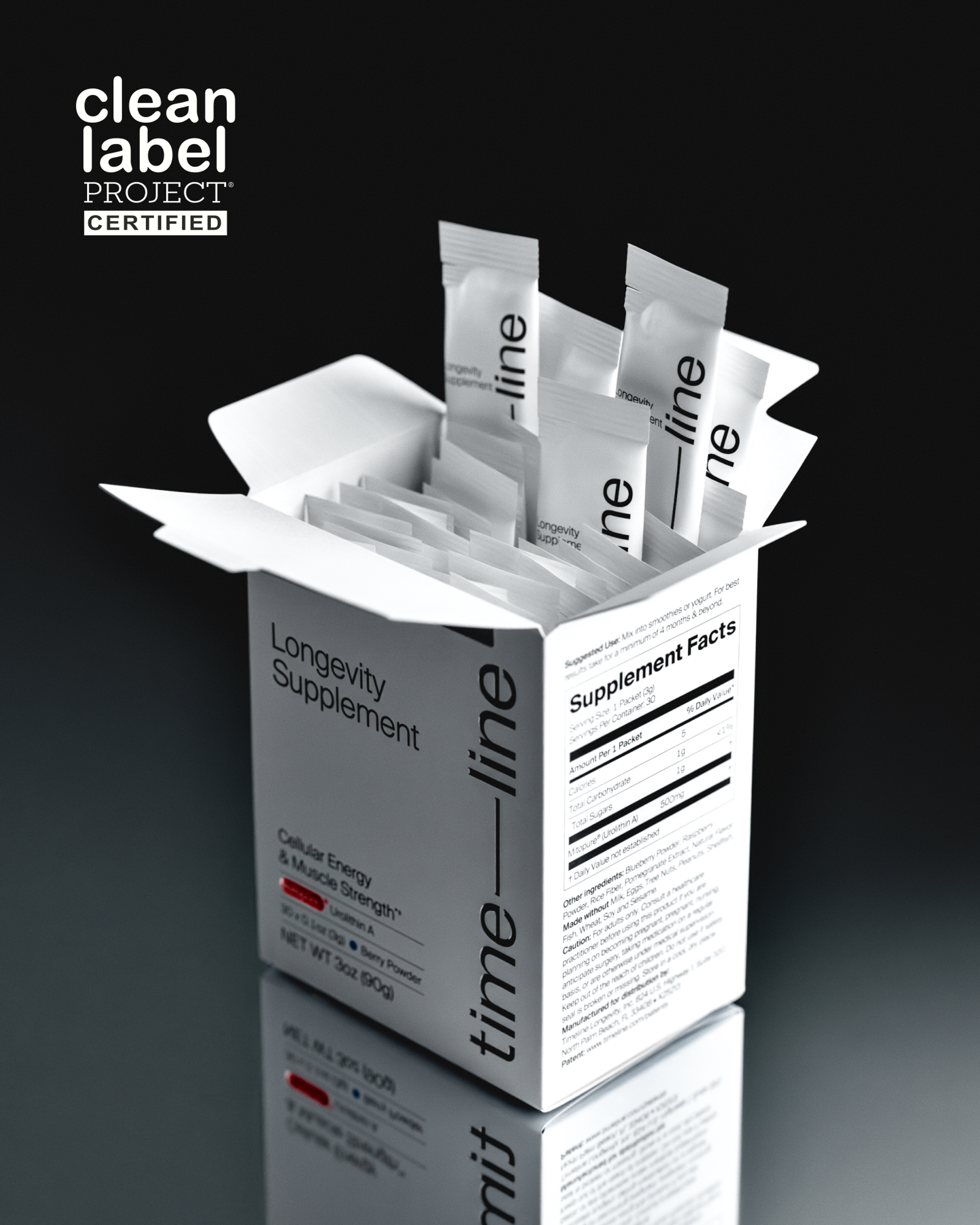Heart Rate Variability and Longevity: Your Guide to HRV
Heart rate variability, or HRV, is a powerful indicator of health and longevity. Learn how to measure and improve this marker, and understand HRV.
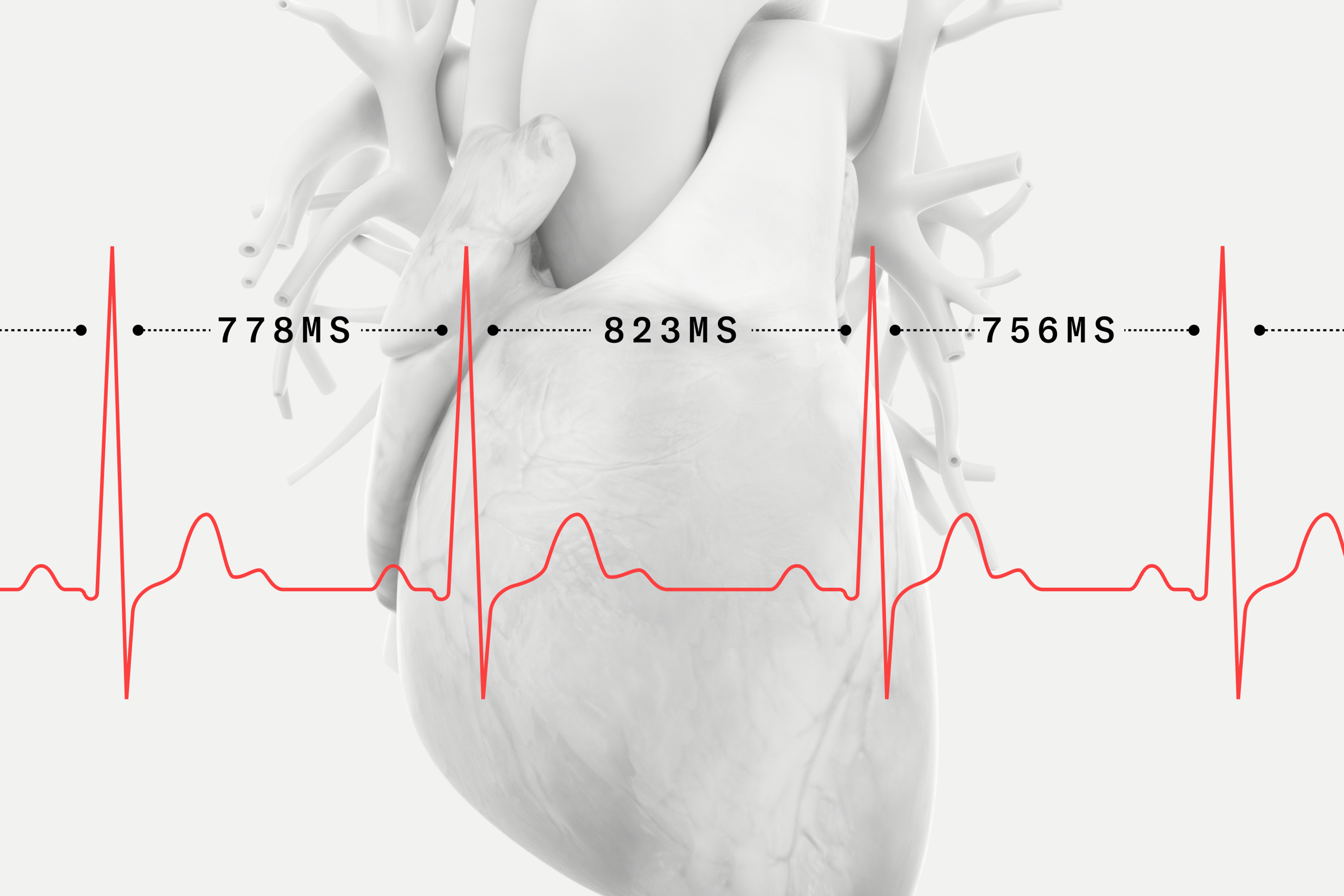
What to know
Heart rate variability (HRV) measures the difference in space between heartbeats.
HRV is an effective marker of how your nervous system is behaving.
Higher HRV is associated with lower disease risk and longer life.
Higher HRV indicates that athletes have recovered from exercise and are ready for more.
HRV can be improved via exercise, a healthy diet, and reducing stress.
One in three American adults now wears an activity tracker, which means that millions of people are talking about a lot of health-related numbers: It’s not uncommon to hear friends talking about their resting heart rate, their sleep score, or their recovery level.
Heart rate variability, or HRV, may be one of the numbers your fitness tracker provides—but it may be a little more confusing. The simplest explanation is that it’s a measure of the space between your heartbeats. That interval provides a valuable glimpse into the health of your nervous system, your recovery from exercise, and even your risk of cardiovascular disease. Here’s how to understand your HRV, how it can impact your longevity, and how to improve it.
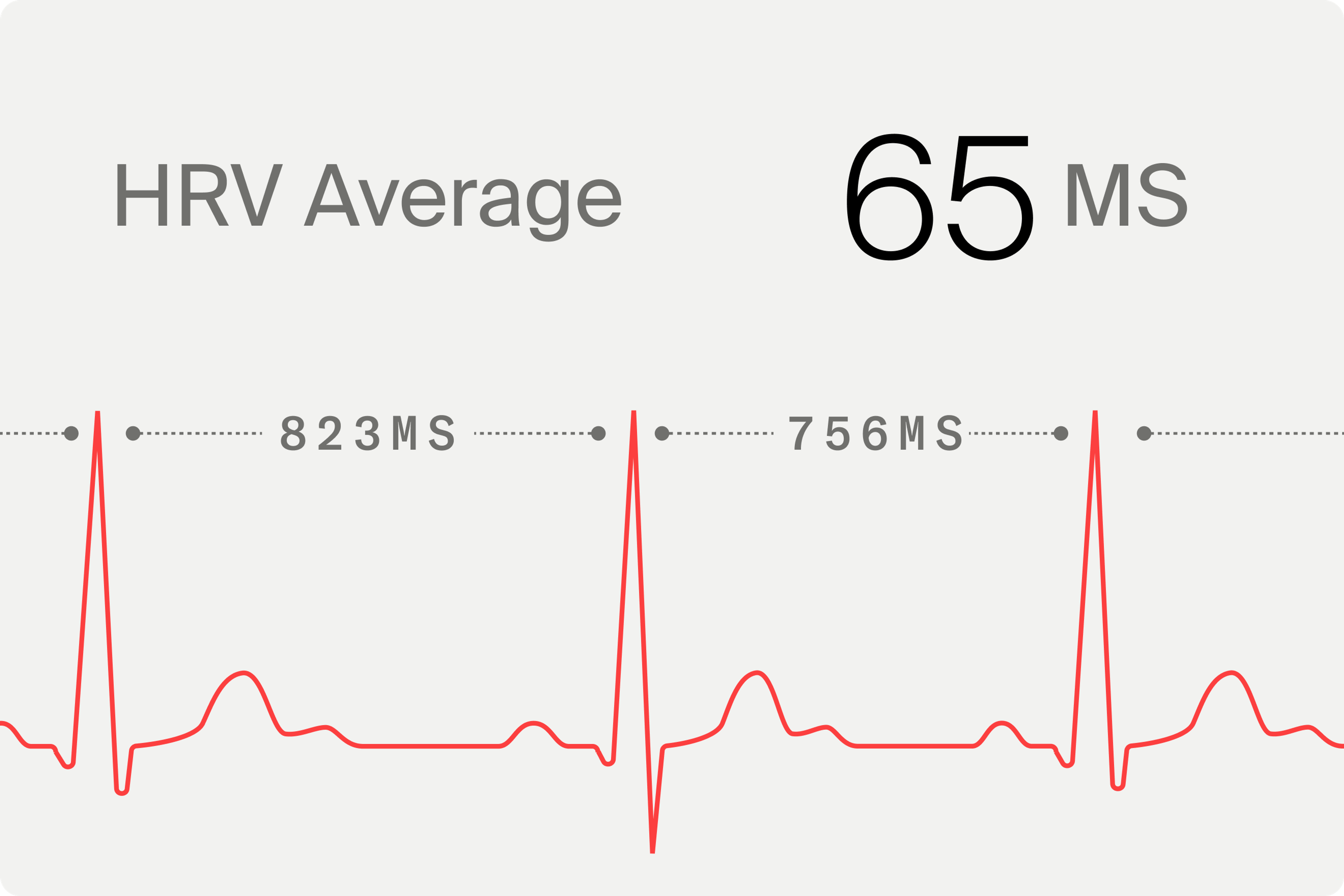
What is Heart Rate Variability?
We talk about heart rate in beats per minute. For example, if your heart rate is 60, it’s beating 60 times per minute. But that doesn’t mean it’s beating exactly once every second … it’s an average over the course of the minute. One beat might be 0.9 seconds, while another might be 1.1 seconds. That difference between beats is your heart rate variability, or HRV.[1]
The first time you hear it, variability in heart rate sounds dangerous: Your heartbeat is supposed to be like a steady drumbeat, right? And an irregular heartbeat can lead to cardiac arrest[2]. But those dangerous changes to your heart’s rhythms are big swings. HRV is measuring differences in the beat that are much, much smaller, says Mike Nelson, Ph.D., C.S.C.S., an associate professor at the Carrick Institute.
“It’s a little bit of movement around the average heart rate. Instead of 65, it’s 65.2, or 65.7,” he says. “It’s that fine-scale variability we’re talking about when we talk about HRV.”
Why HRV Matters
Several experts are recommending the use of HRV as a biomarker of health and longevity. This is because HRV can tell you whether your body is in a “fight or flight” mode or whether it’s in a state of recovery and balance. That’s because HRV has to do with more than just your heart. It’s about the connection between your nervous system and your heart.
The heart and the brain are intricately connected, and HRV can act as a proxy measure of your nervous system. Specifically, HRV points to activity in your autonomic nervous system, the unconscious part that controls your heart rate, breathing rate, digestion, and body temperature[3]. The autonomic system has two opposing parts: The parasympathetic and sympathetic nervous systems.
When your body or mind is under stress, the sympathetic nervous system activates your “fight or flight” mode. Your parasympathetic system, on the other hand, is your “rest and digest” component for when you’re under less duress.
Low HRV is associated with more sympathetic nervous system activity—more bodily and mental stress. Higher HRV is associated with more parasympathetic activity, indicating you’re better equipped for recovery from stressors. [4]
Returning to a higher HRV after a period of lower HRV also indicates that you’ve recovered, Nelson says. For athletes he coaches, returning to what’s a “normal” individual HRV for them is an indication that their bodies have repaired the damage from their workout—and they’re ready to do the same kind of workout again. If your HRV is still lower than normal for you, you’re still recovering from that stressor.
When your HRV stays lower than normal, it can be an indicator of certain health problems. People with headache disorders tend to have lower HRVs.[5] It also may be an indicator of system inflammation, diabetes,[6] and long-term cardiovascular disease risk[7]. Low HRV is also associated with mental health struggles, including anxiety disorders[8] and burnout[9] .

How to Measure HRV? And What’s a Good HRV?
The gold standard for measuring HRV is an electrocardiogram or ECG.[11] But for most people, it is more likely that you’ll be using your phone or a fitness tracker to keep tabs on yours. While these at-home devices can offer valuable insights, studies have found several limitations, from device accuracy to lack of limited clinical validation.[10]
To get the most from your measurement, Nelson says, wear the tracker through the night to get all-night data, and then use the tracker’s measurement tool once every morning—after you’ve woken up and used the bathroom, but before having coffee. This will provide you with a personal baseline for your HRV, he says, so you can keep track of whether it goes up or down over time.
This morning measurement is a state you can easily replicate, he says, and it’s before other activities you do during the day lower your HRV when you’re dealing with the stress associated with those activities.
What’s a Good HRV?
In general, a higher HRV is considered healthier, however, the amount that your personal HRV fluctuates from your own baseline, and how much that baseline changes over time, is considered to be more important than the specific measurement of your HRV.[12]
When comparing your HRV to others, it’s important to know that men tend to have higher variability than women and that both sexes see reduced HRV with aging[13]. In one study of more than 84,000 people, scientists showed that HRV declined from around an average of 80 milliseconds between beats for teenagers to 25 milliseconds for people over 75.[14]
The fitter you are, the less the decrease in HRV with age. Studies have demonstrated that master-level athletes retained high levels of HRV into middle age.[15]
HRV and Longevity
HRV helps us understand how our body reacts to and adapts to stress, so it makes sense that it would be linked to a longer, healthier life.
The medical community has understood this for some time: In 1987, a landmark study in the New England Journal of Medicine found that lower HRV was associated with a greater risk of dying following a heart attack.[16]
Other studies have found that greater HRV is modestly associated with lower lifetime cardiovascular disease risk[19], and it’s associated with a reduced risk of diabetes[18]. And, one study of 5,000 older people found that higher HRV was associated with a lower risk of death in the four years following the study.[17]
How to Improve HRV
HRV is a great marker for the state of your autonomic nervous system, Nelson says, but when your HRV is low, “it’s horrible at telling you what that dip is from.”
The good news is that HRV is generally improved by the same lifestyle changes and practices that improve overall health and longevity: Reducing stress, exercising, eating a healthy diet full of whole foods and limited amounts of ultra-processed foods, maintaining a healthy weight, and getting plenty of sleep.
Nelson suggests looking at your health as it relates to HRV as a bucket. Improving these health-related factors will plug holes in the bucket, allowing it to fill. You can then tune your exercise and diet to increase the bucket’s size. Here’s how:

How to Exercise to Improve HRV
HRV improves with another measure of fitness that your watch might display: VO2Max, a measure of the maximum amount of oxygen your body can use at one time. In fact, in some studies, improvements in HRV and VO2Max improve in “near-perfect” correlation.[20]
Think of your cardio fitness as an engine, Nelson says. To improve its top performance—your VO2Max—you want to make the engine bigger, and make that bigger engine able to work harder.
To improve the size of your cardio engine, perform some dedicated aerobic training three to five times per week, Nelson says, with each session lasting 20 minutes or more. For the intensity of these sessions, this is the kind of work you probably think of as “cardio.”
He also recommends that once per week, you perform an interval training session. In interval training, hard work is alternated with easy work or complete rest.
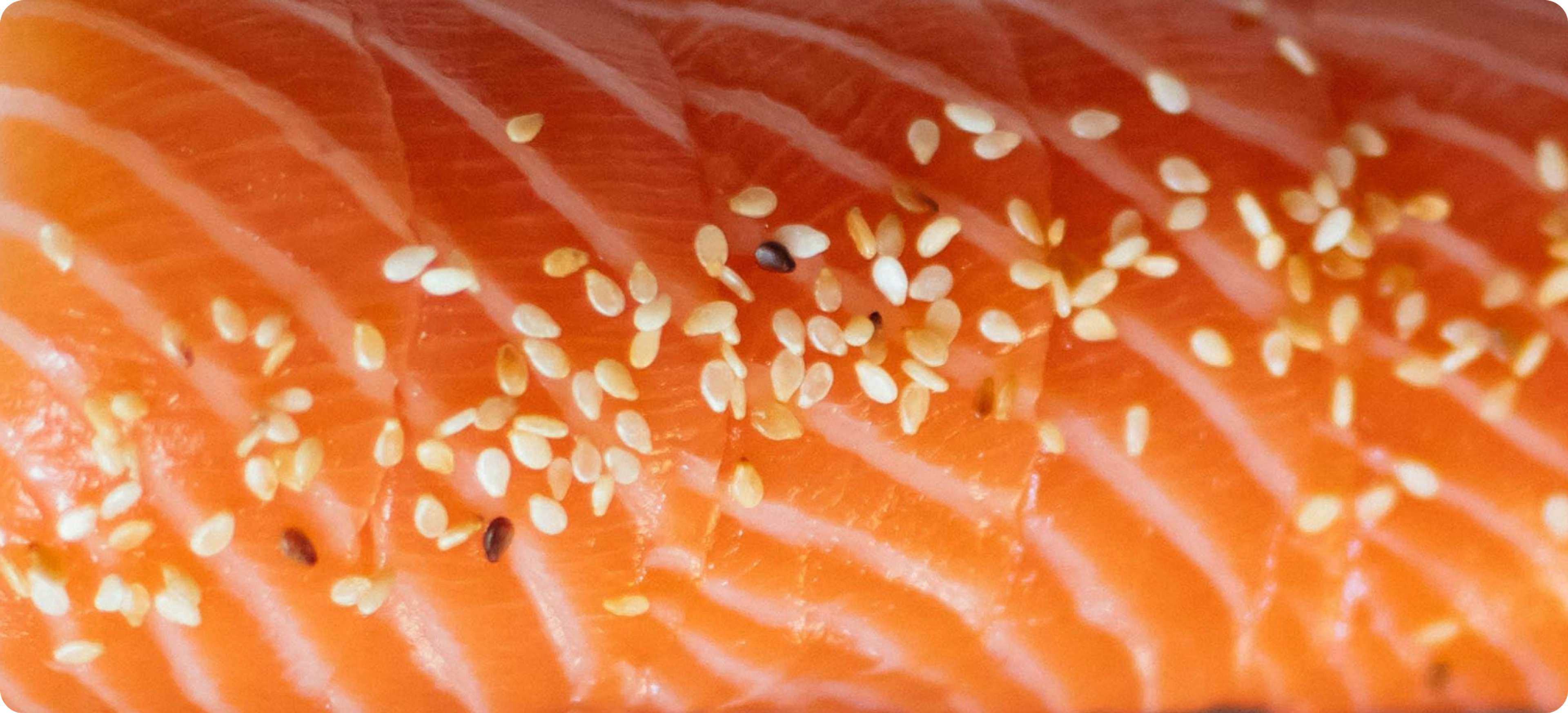
Foods That Improve HRV
Studies have found that a healthy eating five daily servings of fruits and vegetables, swapping whole grains for processed carbs, and reducing meat intake can all improve HRV.[21] But when you’re low on certain nutrients, your HRV may suffer. These include:
• Vitamin D: Studies have found a correlation between D deficiency and reduced HRV[22]. This is one reason that daily dairy consumption has been recommended for healthy HRV.
• Vitamin B-12: Foods like salmon, beef, yogurt, and eggs are all high in this vitamin.[23]
• Omega-3 fatty acids: Found in fatty fish and fish oil supplements, chia seeds, walnuts, and soybeans, these polyunsaturated fatty acids are associated with improved HRV.[24]
HRV: Final Thoughts
Heart rate variability, or HRV, measures the time between your heartbeats. In general, more variability is better. Your fitness, stress levels, and nutrition may impact how much your HRV varies from its baseline level.
You can get a fairly accurate measure of that baseline with most fitness trackers. Take your measurements at the same time each day when you’re rested.
While there’s no standard recommendation for a “good” HRV, seeing your baseline go down for an extended period could be a sign that something’s wrong. If that happens, consult your doctor.
Authors

Health & Fitness Writer

Reviewed by
Director Science Communications
References
- ↑
Tiwari R, Kumar R, Malik S, Raj T, Kumar P. Analysis of Heart Rate Variability and Implication of Different Factors on Heart Rate Variability. Curr Cardiol Rev. 2021;17(5):e160721189770. doi:10.2174/1573403X16999201231203854
- ↑
Desai DS, Hajouli S. Arrhythmias. [Updated 2023 Jun 5]. In: StatPearls [Internet]. Treasure Island (FL): StatPearls Publishing; 2024 Jan-.
- ↑
Arakaki X, Arechavala RJ, Choy EH, Bautista J, Bliss B, Molloy C, Wu DA, Shimojo S, Jiang Y, Kleinman MT, Kloner RA. The connection between heart rate variability (HRV), neurological health, and cognition: A literature review. Front Neurosci. 2023 Mar 1;17:1055445. doi: 10.3389/fnins.2023.1055445. PMID: 36937689; PMCID: PMC10014754.
- ↑
Tiwari R, Kumar R, Malik S, Raj T, Kumar P. Analysis of Heart Rate Variability and Implication of Different Factors on Heart Rate Variability. Curr Cardiol Rev. 2021;17(5):e160721189770. doi:10.2174/1573403X16999201231203854
- ↑
Koenig J, Williams DP, Kemp AH, Thayer JF. Vagally mediated heart rate variability in headache patients—a systematic review and meta-analysis. Cephalalgia. 2016;36(3):265-278. doi:10.1177/0333102415583989
- ↑
Li K, Cardoso C, Moctezuma-Ramirez A, Elgalad A, Perin E. Heart Rate Variability Measurement through a Smart Wearable Device: Another Breakthrough for Personal Health Monitoring?. Int J Environ Res Public Health. 2023;20(24):7146. Published 2023 Dec 6. doi:10.3390/ijerph20247146
- ↑
Kubota Y, Chen LY, Whitsel EA, Folsom AR. Heart rate variability and lifetime risk of cardiovascular disease: the Atherosclerosis Risk in Communities Study. Ann Epidemiol. 2017;27(10):619-625.e2. doi:10.1016/j.annepidem.2017.08.024
- ↑
Cheng YC, Su MI, Liu CW, Huang YC, Huang WL. Heart rate variability in patients with anxiety disorders: A systematic review and meta-analysis. Psychiatry Clin Neurosci. 2022;76(7):292-302. doi:10.1111/pcn.13356
- ↑
Lennartsson AK, Jonsdottir I, Sjörs A. Low heart rate variability in patients with clinical burnout. Int J Psychophysiol. 2016;110:171-178. doi:10.1016/j.ijpsycho.2016.08.005
- ↑
Li K, Cardoso C, Moctezuma-Ramirez A, Elgalad A, Perin E. Heart Rate Variability Measurement through a Smart Wearable Device: Another Breakthrough for Personal Health Monitoring?. Int J Environ Res Public Health. 2023;20(24):7146. Published 2023 Dec 6. doi:10.3390/ijerph20247146
- ↑
Georgiou K, Larentzakis AV, Khamis NN, Alsuhaibani GI, Alaska YA, Giallafos EJ. Can Wearable Devices Accurately Measure Heart Rate Variability? A Systematic Review. Folia Med (Plovdiv). 2018;60(1):7-20. doi:10.2478/folmed-2018-0012
- ↑
Shaffer F, Ginsberg JP. An Overview of Heart Rate Variability Metrics and Norms. Front Public Health. 2017 Sep 28;5:258. doi: 10.3389/fpubh.2017.00258. PMID: 29034226; PMCID: PMC5624990.
- ↑
Tegegne BS, Man T, van Roon AM, Snieder H, Riese H. Reference values of heart rate variability from 10-second resting electrocardiograms: the Lifelines Cohort Study. Eur J Prev Cardiol. 2020;27(19):2191-2194. doi:10.1177/2047487319872567
- ↑
Tegegne BS, Man T, van Roon AM, Snieder H, Riese H. Reference values of heart rate variability from 10-second resting electrocardiograms: the Lifelines Cohort Study. Eur J Prev Cardiol. 2020;27(19):2191-2194. doi:10.1177/2047487319872567
- ↑
Deus LA, Sousa CV, Rosa TS, et al. Heart rate variability in middle-aged sprint and endurance athletes. Physiol Behav. 2019;205:39-43. doi:10.1016/j.physbeh.2018.10.018
- ↑
Kleiger, R. E., Miller, J. P., Bigger, J. T., & Moss, A. J. (1987). Decreased heart rate variability and its association with increased mortality after acute myocardial infarction. The American Journal of Cardiology, 59(4), 256–262.
- ↑
Tsuji, H., Venditti, F. J., Manders, E. S., Evans, J. C., Larson, M. G., Feldman, C. L., & Levy, D. (1994). Reduced heart rate variability and mortality risk in an elderly cohort. The Framingham Heart Study. Circulation, 90(2), 878–883.
- ↑
Li K, Cardoso C, Moctezuma-Ramirez A, Elgalad A, Perin E. Heart Rate Variability Measurement through a Smart Wearable Device: Another Breakthrough for Personal Health Monitoring?. Int J Environ Res Public Health. 2023;20(24):7146. Published 2023 Dec 6. doi:10.3390/ijerph20247146
- ↑
Kubota Y, Chen LY, Whitsel EA, Folsom AR. Heart rate variability and lifetime risk of cardiovascular disease: the Atherosclerosis Risk in Communities Study. Ann Epidemiol. 2017;27(10):619-625.e2. doi:10.1016/j.annepidem.2017.08.024
- ↑
Esco MR, Flatt AA, Nakamura FY. Initial Weekly HRV Response is Related to the Prospective Change in VO2max in Female Soccer Players. Int J Sports Med. 2016;37(6):436-441. doi:10.1055/s-0035-1569342
- ↑
Strüven A, Holzapfel C, Stremmel C, Brunner S. Obesity, Nutrition and Heart Rate Variability. Int J Mol Sci. 2021;22(8):4215. Published 2021 Apr 19. doi:10.3390/ijms22084215
- ↑
Lopresti AL. Association between Micronutrients and Heart Rate Variability: A Review of Human Studies. Adv Nutr. 2020;11(3):559-575. doi:10.1093/advances/nmz136
- ↑
Lopresti AL. Association between Micronutrients and Heart Rate Variability: A Review of Human Studies. Adv Nutr. 2020;11(3):559-575. doi:10.1093/advances/nmz136
- ↑
Christensen JH. Omega-3 polyunsaturated Fatty acids and heart rate variability. Front Physiol. 2011;2:84. Published 2011 Nov 16. doi:10.3389/fphys.2011.00084
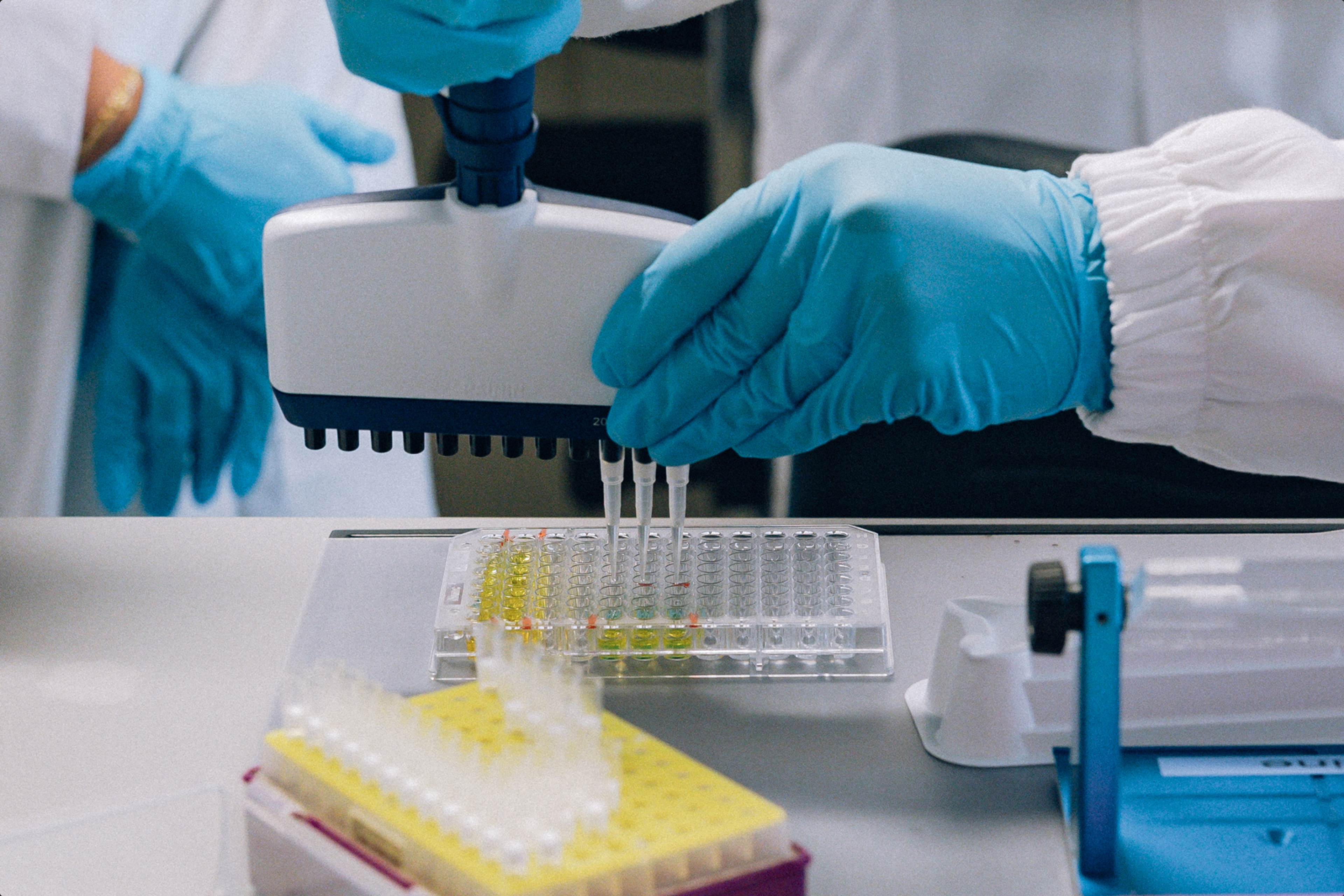
·
Nutrition·
Studies·
